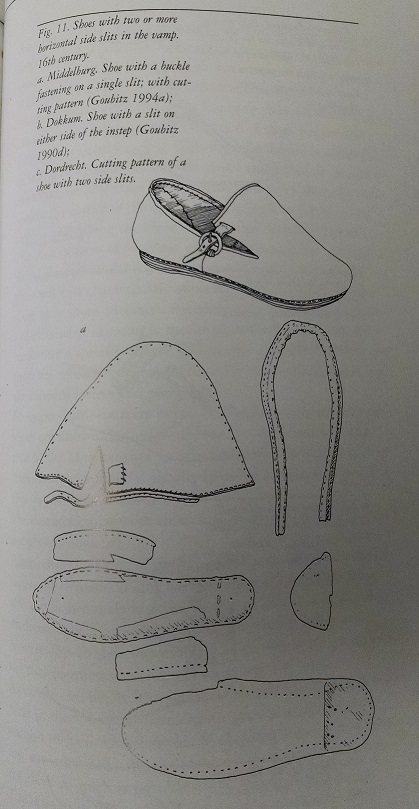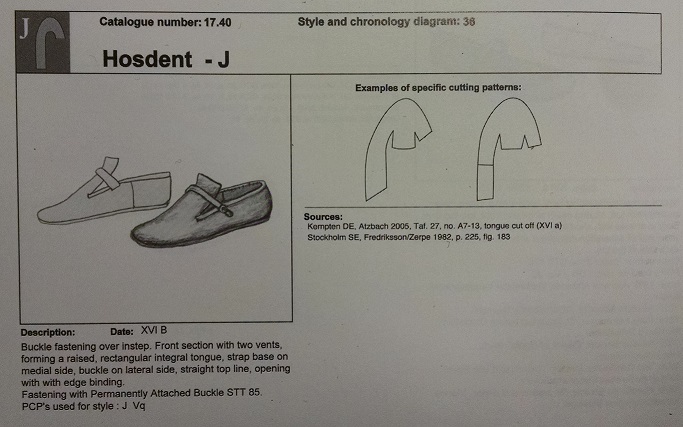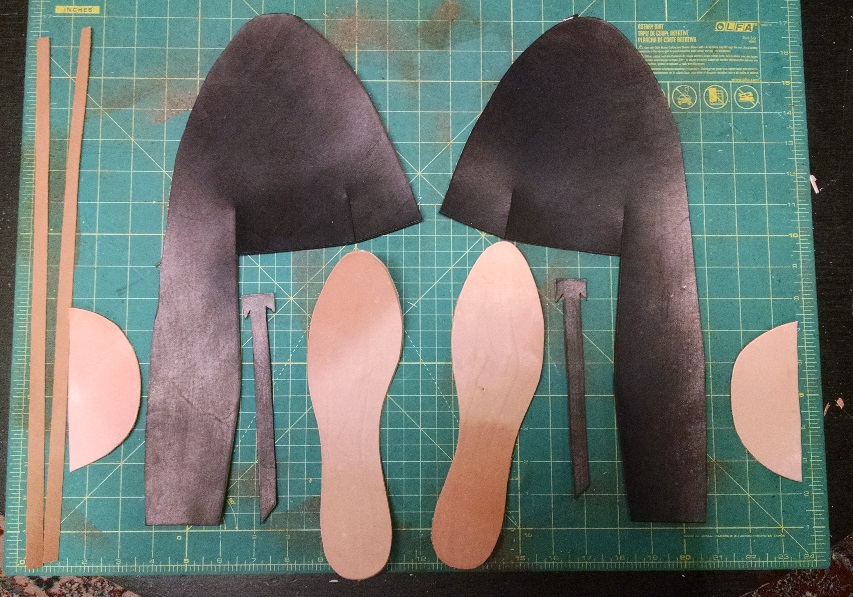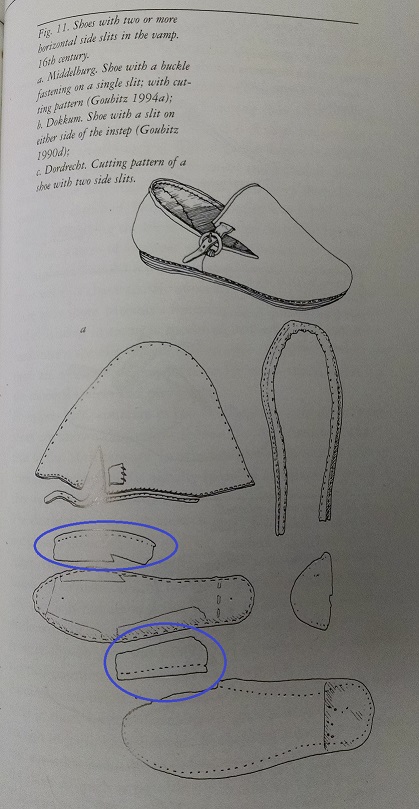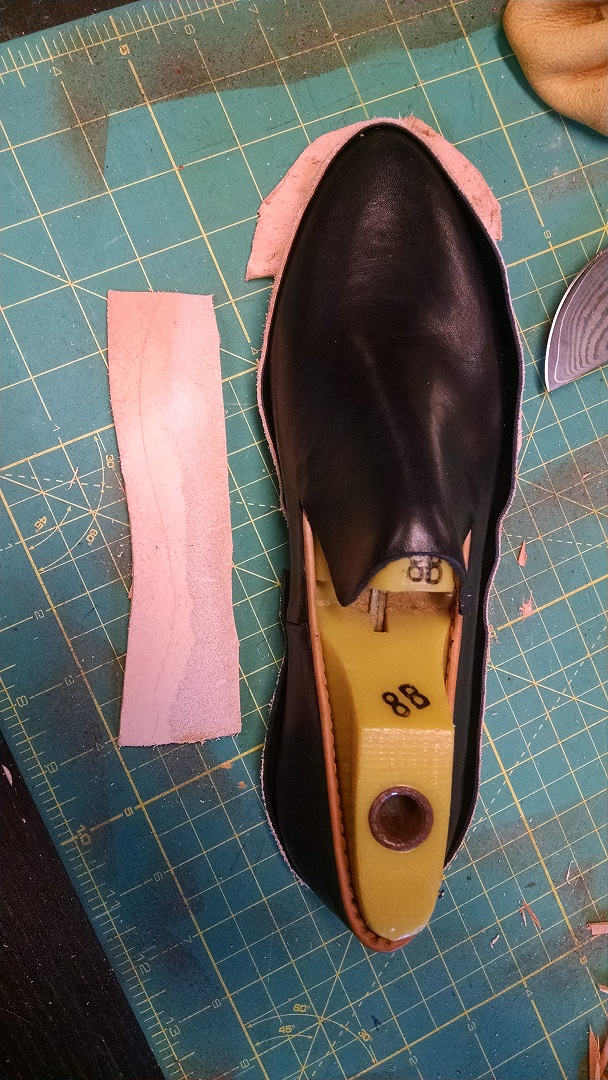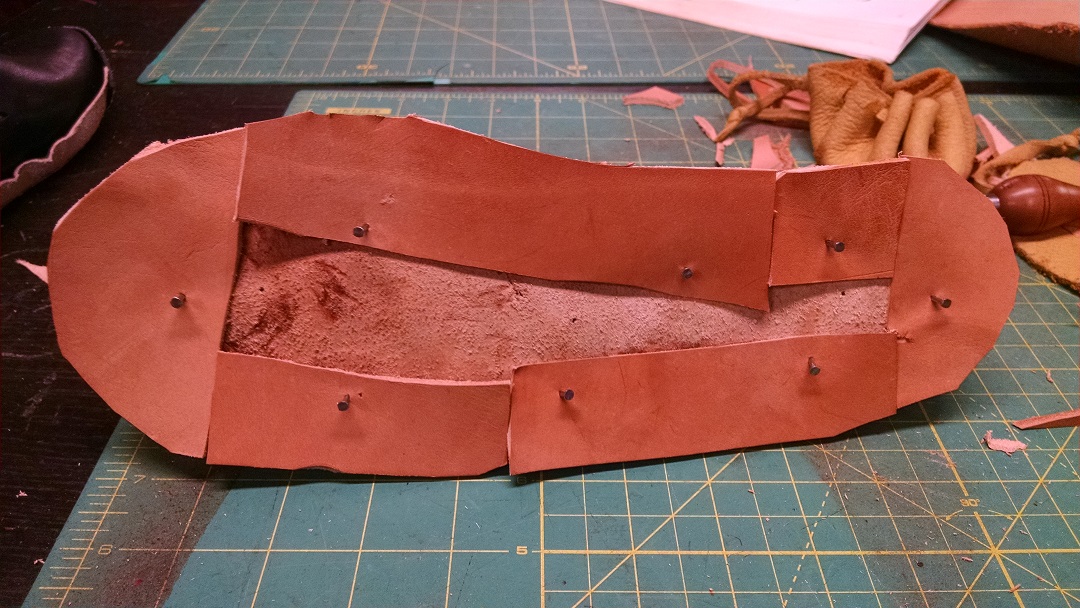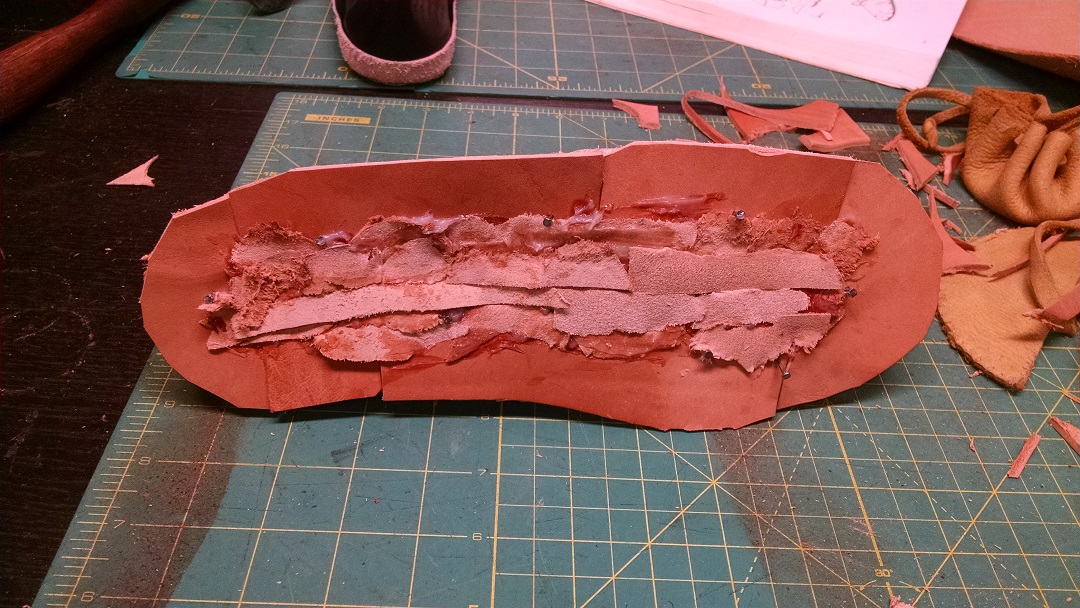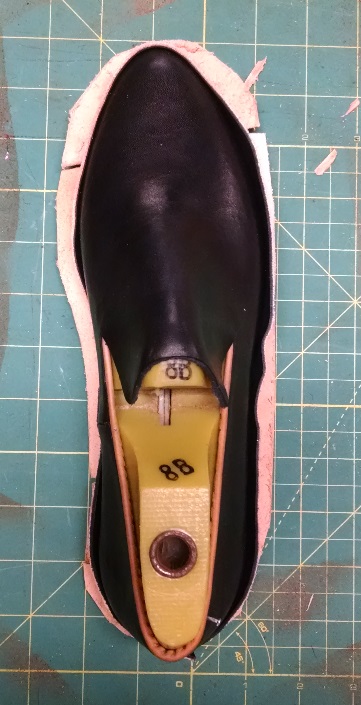This particular pair, for the incomparable Susan W., is representative of a style of shoe that was found in multiple different locations. At first, when I was requested to make this style of shoe, I thought it a bit lackluster and uninteresting. As I started to near completion, I started to more fully appreciate this simple but elegant style of shoe. The strap over the tongue and buckle on the lateral side really does give a nice element of visual interest to the shoes. Plus, they look cozy and have that “Mary-Jane-esque” element to them yet maintain their individuality as a shoe.
There are several findings of this shoe style, in Hosdent, Middleburg, Dokum, and Dordrecht, to name a few places. They all have a similar construction in that the vamp extends to form a tongue, and a strap is set in at the medial (inside) of the shoe and goes out to the lateral (outside) of the shoe where it buckles in.
Goubitz has this style of shoe under shoes with “Permanently Attached Buckles.” Volken’s diagram follows, and you can see the cutting pattern in both.
At first glance, it seems straightforward enough – simple J type pattern, a strap across the outside, heel stiffener, binding strip…let’s go ahead and cut out and see where we are.
The closing, lasting, and inseaming processes are all the same as before. However, in this case, you can see that there is not actually a full midsole, but there is a partial midsole around the shoe. Midsoles and partial midsoles were also found on several shoes on board the Mary Rose. However, aside from looking more expensive with the extra leather, I can only speculate on its use.
Cutting sturdy chunks of leather and lining them up on the insole allows us to make a mark to act a guide with which to pare down the leather. This piece has not been fully pared down yet.
We can then paste and tack the pieces in place once they have been pared down and tailored.
Then, using the pared remnants from the midsole, we can fill in the gap between the insole and the treadsole. Paste up the center, and lay in the bits and pieces.
Of course, once done, you can take out the nails, paste the whole lot, and then lay on the treadsole and start stitching. This images shows the pasted in pieces ready to be pasted again and have the treadsole placed on it to prepare for sewing.
Once sewn on, it does appear that there is a second layer of material there. However, if this is just to fool someone into thinking that there is a second sole, it seems to me that even a casual observer would note the joins in the midsole, which might belie the purpose.
Really pretty pleased with them – I think that they may take a place on pairs of shoes that have worked out far better than expected!

